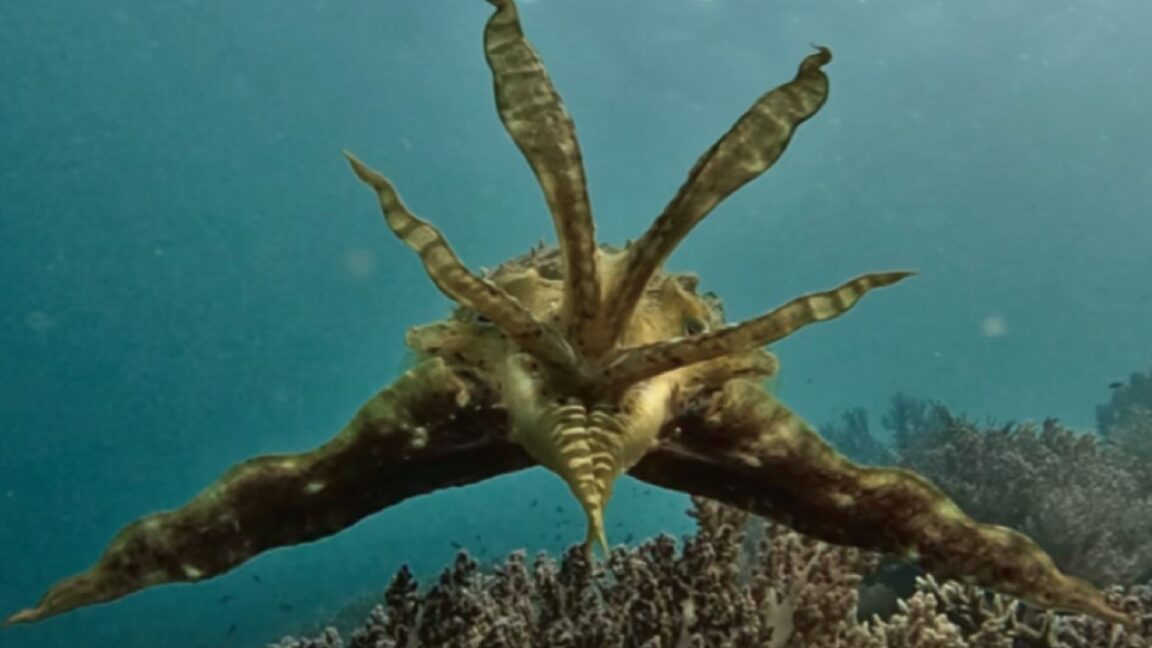Crafty cuttlefish employ several different camouflaging displays while hunting their prey, according to a new paper published in the journal Ecology, including mimicking benign ocean objects like a leaf or coral, or flashing dark stripes down their bodies. And individual cuttlefish seem to choose different preferred hunting displays for different environments.
It’s well-known that cuttlefish and several other cephalopods can rapidly shift the colors in their skin thanks to that skin’s unique structure. As previously reported, squid skin is translucent and features an outer layer of pigment cells called chromatophores that control light absorption. Each chromatophore is attached to muscle fibers that line the skin’s surface, and those fibers, in turn, are connected to a nerve fiber. It’s a simple matter to stimulate those nerves with electrical pulses, causing the muscles to contract. And because the muscles are pulling in different directions, the cell expands, along with the pigmented areas, changing the color. When the cell shrinks, so do the pigmented areas.
Underneath the chromatophores, there is a separate layer of iridophores. Unlike the chromatophores, the iridophores aren’t pigment-based but are an example of structural color, similar to the crystals in the wings of a butterfly, except a squid’s iridophores are dynamic rather than static. They can be tuned to reflect different wavelengths of light. A 2012 paper suggested that this dynamically tunable structural color of the iridophores is linked to a neurotransmitter called acetylcholine. The two layers work together to generate the unique optical properties of squid skin.
And then there are leucophores, which are similar to the iridophores, except they scatter the full spectrum of light, so they appear white. They contain reflectin proteins that typically clump together into nanoparticles so that light scatters instead of being absorbed or directly transmitted. Leucophores are mostly found in cuttlefish and octopuses, but there are some female squid of the genus Sepioteuthis that have leucophores that they can “tune” to only scatter certain wavelengths of light. If the cells allow light through with little scattering, they’ll seem more transparent, while the cells become opaque and more apparent by scattering a lot more light.
Scientists learned in 2023 that the process by which cuttlefish generate their camouflage patterns is significantly more complex than scientists previously thought. Specifically, cuttlefish readily adapted their skin patterns to match different backgrounds, whether natural or artificial. And the creatures didn’t follow the same transitional pathway every time, often pausing in between. That means that contrary to prior assumptions, feedback seems to be critical to the process, and the cuttlefish were correcting their patterns to match the backgrounds better.
